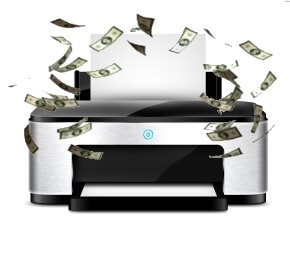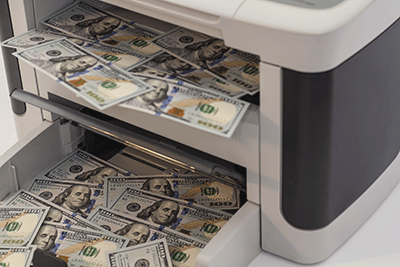How Your Printer Is Costing You Money
As the end of the fiscal year rapidly approaches for many businesses, everyone is looking for ways to reduce costs and save money. But before you...
3 min read
Heather Trone Nov 21, 2024 8:28:44 AM


When was the last time you thought about how your office handles documents? For many businesses, printing is a background process—something that happens automatically, often without much oversight. Yet hidden in those seemingly routine tasks are inefficiencies that quietly drain resources. From wasted supplies to unnecessary maintenance, these inefficiencies can significantly impact your bottom line.
In this post, we’ll uncover the overlooked print costs and share actionable strategies to optimize processes, cut expenses, and boost profitability.
At first glance, managing office documents seems straightforward: paper, ink, and occasional upkeep. However, unnoticed inefficiencies can add up quickly. Let’s break down the common hidden expenses:
It’s easy to overlook how much paper gets discarded in a busy office. Common culprits include:
The result? Unused stacks of paper, inflated budgets, and overflowing recycling bins.
Consumables like ink and toner are some of the most expensive components in your document workflow. Common inefficiencies include:
Equipment that isn’t energy-efficient can result in higher utility bills. This is especially true for older models that don’t have power-saving features or remain on standby for long periods. With multiple machines running in an office, energy costs can quickly climb.
Poorly maintained machines often break down, resulting in:
Managing an office’s document needs involves more than hardware and supplies. Hidden administrative expenses include:
Beyond financial waste, inefficiencies can harm your company’s sustainability goals. Unnecessary consumption of resources like paper and energy increases your carbon footprint, which can affect your brand image.
Each factor chips away at profitability but is often overlooked until the costs become glaringly obvious.
These hidden costs don’t just impact your budget—they ripple through the entire organization:
For example, a small office that produces invoices daily could waste hundreds of dollars per month on supplies if processes aren’t optimized. Over the course of a year, that’s thousands of dollars lost—funds that could have been reinvested in growth.
Improving efficiency doesn’t mean sacrificing quality. Here are some practical steps to streamline your document processes and realize cost savings:
Partnering with a managed print provider can transform how your organization handles its documents. These professionals assess your current setup, identify inefficiencies, and implement tailored solutions to improve productivity and reduce expenses.
For instance, a mid-sized company might struggle with managing multiple devices and supply orders. By outsourcing these tasks, the business can simplify operations, cut costs, and free up internal resources.
Addressing inefficiencies provides immediate savings, but the benefits extend far beyond:
The hidden costs of inefficient document management may not always be obvious, but they’re there—affecting profitability with every unnecessary task, wasted supply, or unplanned service call. The good news? With the right strategies, you can take control, save money, and improve your business’s bottom line.
Ready to start saving? Fraser Advanced Information Systems is here to help you optimize your processes and achieve your goals. Contact us today to set up a FREE print assessment and learn how we can reduce your costs and boost efficiency.

As the end of the fiscal year rapidly approaches for many businesses, everyone is looking for ways to reduce costs and save money. But before you...

We've been hearing about the paperless office for nearly three decades now - a utopia of clutter-free desks and offices with no big bulky file...

Do you know how much printing costs your business each year? Any idea how to find out? Although we conduct much of our business digitally, companies...